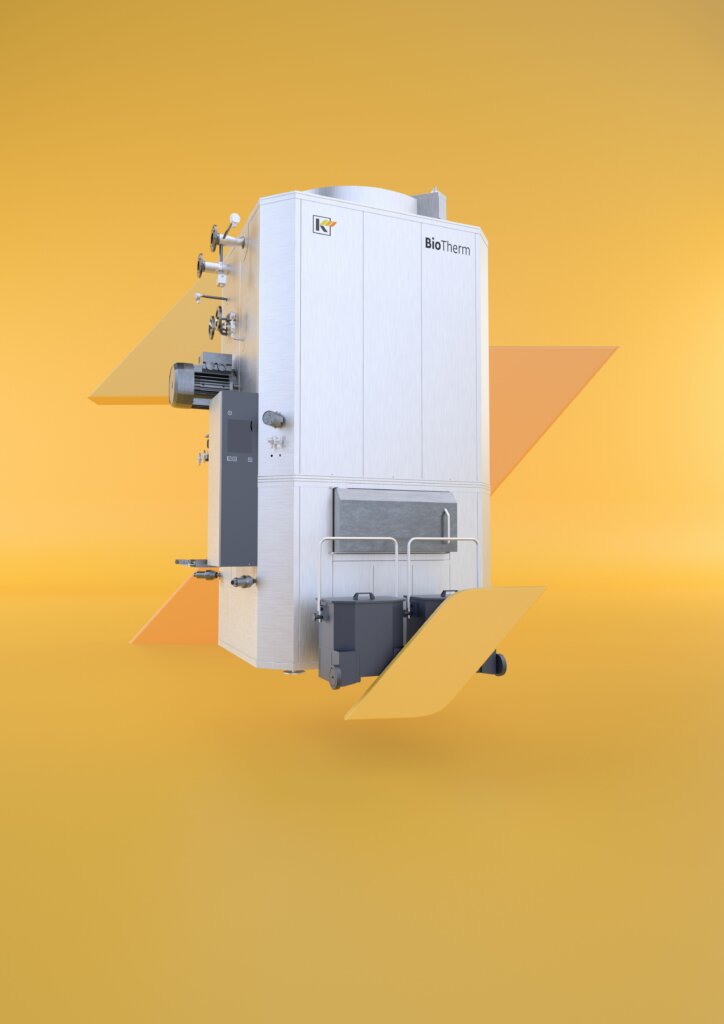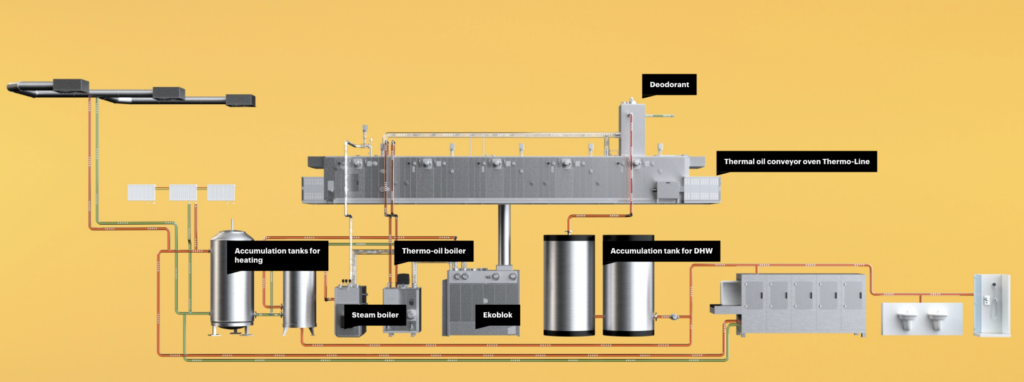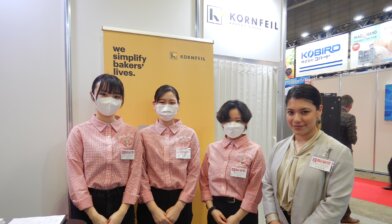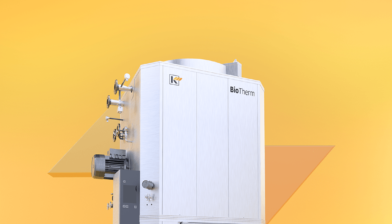What to replace natural gas with
Although the need to move away from fossil fuels, especially with regard to the environment, has been talked about for several years, it was the energy crisis caused by the war in Ukraine, with the threat of an absolute stoppage of the supply of always available gas and unpredictable price increases, that forced us to think seriously about alternative energy sources with the need for an immediate response.
Nature offers us the opportunity to use, for example, the potential of biomass and solar energy, together with the flexibility of thermo-oil technology, bakery ovens and bakeries can be heated completely without the use of traditional energy sources. The dramatic increase in gas and electricity prices for bakeries has turned a normally functioning cash flow into a nightmare from which, unfortunately, we cannot wake up, but we must learn to live in temporarily. Although the situation in the darker scenarios seems unresolvable at the moment, it is necessary to change the way of thinking about traditional methods of bakery production so as to maximize the use of waste energy in bakeries, something Kornfeil has extensive experience with.
The variety of baking oven technologies across bakeries is very wide. Their sizes and technological processes vary greatly, so it is not possible to provide a simple guide to solving the energy and economic crisis. However, the common denominator is the need to reduce energy costs with the possibility of full independence from natural gas or the comprehensive use of waste energy in bakeries, which will bring savings in natural gas consumption.
Below, I would like to introduce you to the possibilities of alternative energy sources for baking, whose use in production is significantly supported by European Union subsidy programs, which can include the renovation of baking ovens, photovoltaic power plants and biomass combustion.
Thermo-oil flexibility
Thermo-oil as a heat transfer medium offers the flexibility to use other energy sources, which are usually installed outside the bakery production area and do not interfere with the production itself for a longer period of time. Although the most important factor when looking for alternative heating is a quick economic return, by moving away from fossil fuels to biomass combustion or the use of solar energy, along with maximizing the use of waste energy, you will make a significant contribution to much needed environmental protection and ensure complete or partial independence from the currently politically exposed natural gas.
BioTherm – the thermo-oil boiler that reduces your costs and protects the environment
The BioTherm thermos-oil boiler uses wood chips and pellets as the source of its heat energy, representing a more economical and environmentally friendly source of energy compared to natural gas. These are fully automatic boilers that, in combination with the Ekoblok, meet all applicable EU environmental standards. The BioTherm thermo-oil boiler connects to an existing thermo-oil boiler system with the need to build fuel storage tanks for either wood chips in bulk or in silos as well as pellets..
Wood chips – the cheapest fuel for baking
Wood chips are the cheapest fuel for heating thermo-oil boilers, with prices around CZK 450/1 MW. One kg of wood chips holds 2.8kW of energy at a moisture content of up to 30% to achieve full boiler output, but handling and storage is more demanding compared to pellets.
Pellets – a comfortable energy source for BioTherm.
Pellets are a more comfortable and convenient fuel in terms of storage and transport. One kg of pellets holds 4.8 – 5kW of energy, but the price is currently increasing and ranges from CZK 1,100 – 1,500 / 1 MW.

Solar energy in bakeries
The use of solar energy makes sense in any size bakery, electricity cannot be replaced. The energy obtained from photovoltaic panels can also be used for baking, but it must be said that the solutions presented below have their limitations and rules.
Again, solar energy can only be used in bakeries with thermo-oil ovens or, logically, electric ovens. It is necessary to install a thermo-oil electric boiler with appropriate power into the boiler system and at the moment of its selection it is necessary to know what type of oven it will be used for and especially when. Here we are referring to the already mentioned traditional, i.e. night-time method of bakery production, but globally we can see that it is also possible to schedule production so that as much production as possible takes place during the day at the time of free energy because of the use of solar energy. Daytime production offers the possibility of distributing fresh bakery products several times a day, which is an interesting topic to consider in a situation of ever higher consumer demands.
In the case of using a combination of PV and a thermo-oil electric boiler, a conventional natural gas boiler remains in reserve for the winter and when the sun is not shining.
Approximately 400kW of thermal power is required to produce 1,000kg of bread/h including energy consumption for rising and baking. However, the accumulation of energy in the oil during the day time for overnight baking is problematic due to the large amount of energy required for baking. The aforementioned problem can be solved by accumulation in battery storage, which represents another financially demanding investment, but I expect that even these storage facilities will soon be supported by national or European subsidies. The installation of PV brings the possibility of selling surplus energy back to the grid, which can have an interesting impact on the economic return on the investment.
It must be said that the alternatives described above represent financially and organizationally demanding investments, but each change brings both negatives and positives, here representing the burden of independence from natural gas or a long-term reduction of energy costs.
If you use cyclothermic or rotary ovens in your bakery, you can only change the burners to other fuels.
Weishaupt, which we have been installing in our ovens for a long time, offers combined natural gas and LTO burners for situations where the natural gas supply is interrupted or stopped. There are also LPG, LNG or biogas burners available, but for most of these fuels the price will probably follow the price of natural gas, which is currently changing dramatically.
Use of waste energy
Another topic to reduce energy costs is the maximum use of waste energy from the flue gases of baking ovens and the energy from the exhaust steam. Kornfeil has been involved in energy projects, including the installation of the famous Ekobloks, for more than 20 years. During that time we have gained a lot of experience and can handle projects of both a small and large-scale nature. This year, we have introduced two new waste energy recovery products that fundamentally improve the use of the condensation heat of the exhaust steam that exists in all bakeries, every day, every hour of baking. It is the exhaust steam in the volume of 10-12% of the so-called flue gas, in each kg of steam we find practically 0.5kW of energy. To paint a simple picture, this means that from 100 kg of exhaust steam we heat 1000 l of hot water/h to 60 C°. The energy obtained can be used to heat hot water for social purposes, feed water for steam boilers or crate washers. We have upgraded the ExtraSteam and ExtraClean EkoBlok model ranges with steam energy recovery technology, where there are two waste energy outputs: the first in the form of 60/80C° heating water as before and the second in the form of hot water heated between 60-90C° according to design requirements.
The same is true for the new product Deodorant, where the energy-deprived steam is no longer vented out of the bakery at all, cleaning the steam of so-called “odors”, hence the chosen name Deodorant. The outlet moist air slightly humidifies the environment in the bakery, which contributes to a more pleasant environment and at the same time does not create a problematic vacuum in the bakery – a known negative phenomenon in winter associated with cracking bread. The new products described for the processing of waste heat from bakery ovens mean a recovery of the input energy for baking of up to 95% with the benefit of significant energy savings in the operation of bakeries. For more information, please visit www.kornfeildeo.com.

If you are interested in these issues, please contact us. We are ready to help you implement a sustainable energy concept for your bakery.
Ing. Karel Kornfeil


